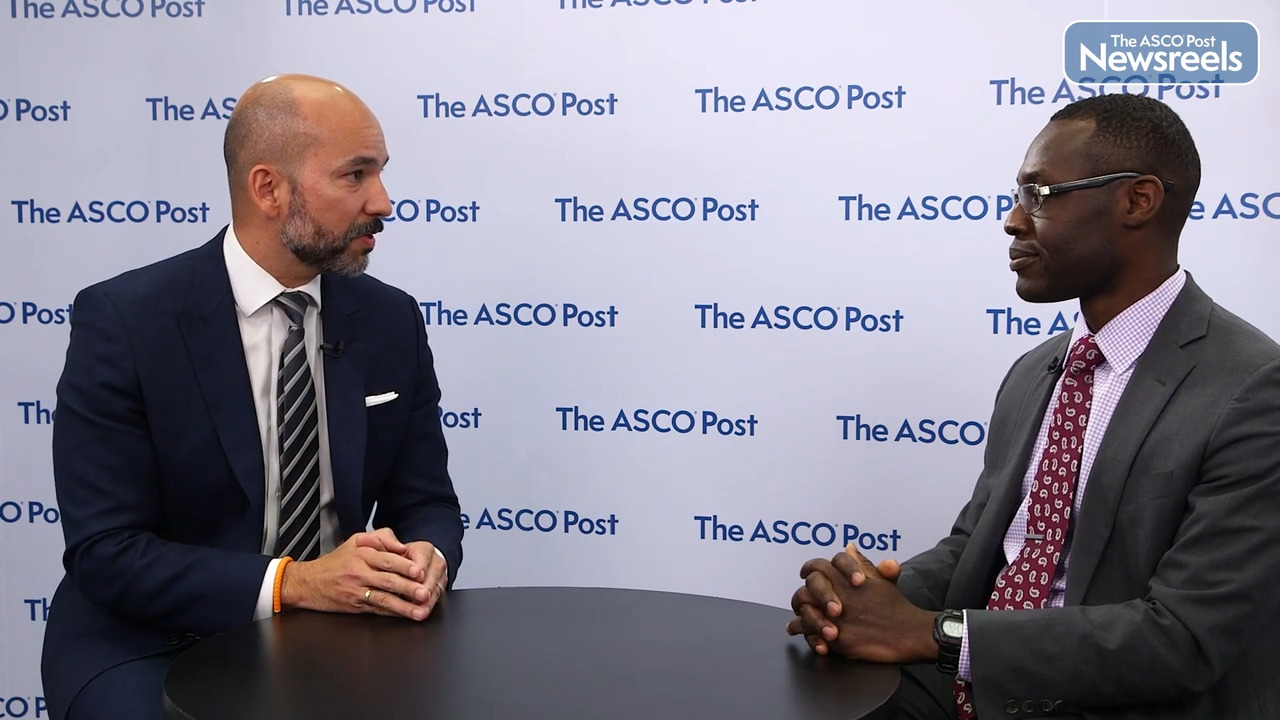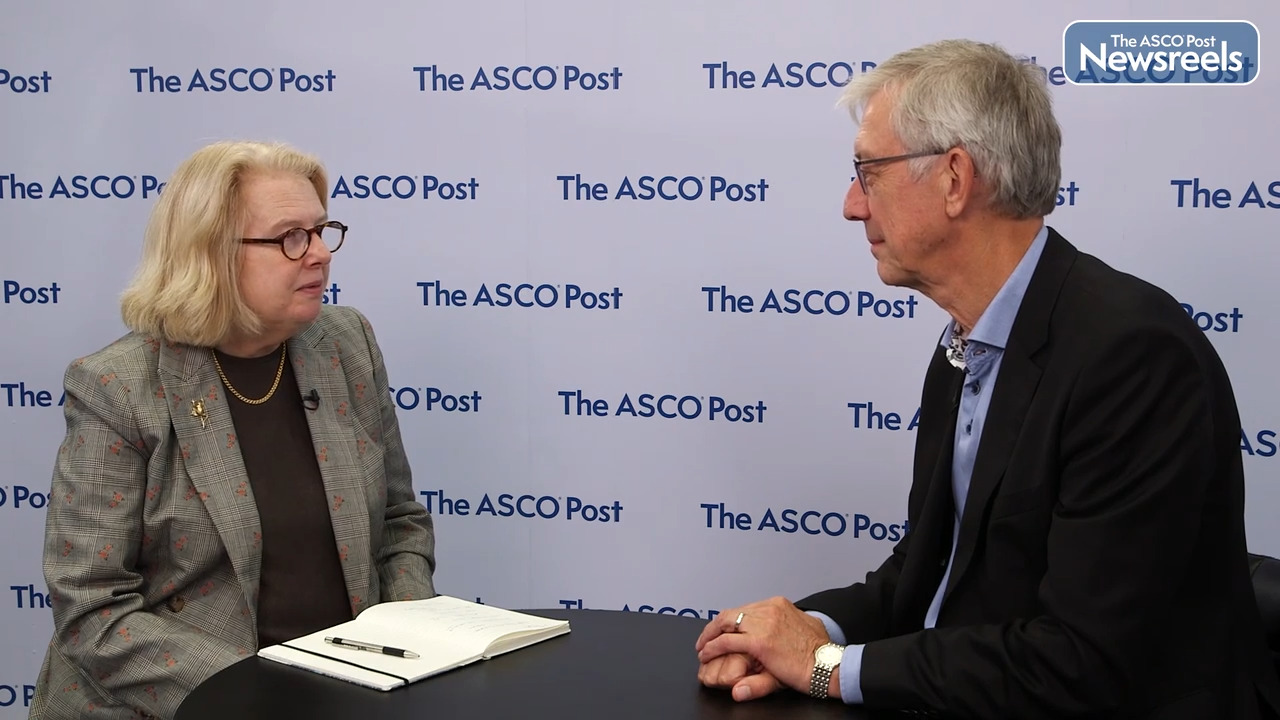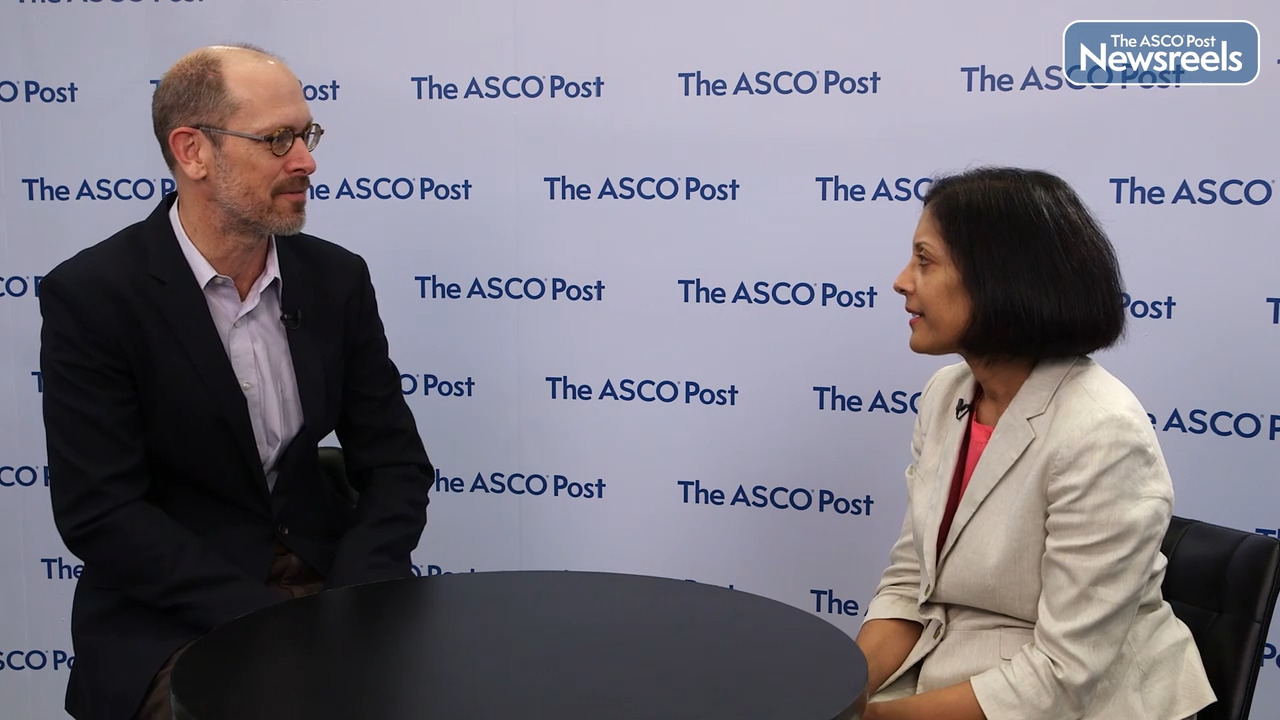Apar Kishor Ganti, MD, on SCLC: Comparing Quality of Life With Once- and Twice-Daily Thoracic Radiotherapy
2022 ASCO Annual Meeting
Apar Kishor Ganti, MD, of the University of Nebraska Medical Center, discusses results from the CALGB 30610 study, which showed a similar clinical benefit for once- and twice-daily radiotherapy administered to patients with limited-stage small cell lung cancer. While both regimens were well tolerated, patients who received radiotherapy once daily had better quality-of-life scores at week 3 and slightly worse scores at week 12. Patients believed the once-daily regimen was more convenient (Abstract 8504).
Transcript
Disclaimer: This video transcript has not been proofread or edited and may contain errors.
CLGB 30610 was a randomized phase three trial that looked at two different radiation regimens for patients with limited state small cell lung cancer. The trial randomized 646 patients to either twice a day radiation, to 45 gray or once a day radiation to 70 gray in combination with chemotherapy. The results of that trial showed that both arms were similar in terms of overall survival.
Since there was no significant difference in outcomes between the two arms, it becomes important to look at other measures to determine what patients should be treated with. This was a quality of life study, as that was conducted as part of CLGB 30610. And what we did, was we selected... we invited a group of individuals who were randomized to the study to take part in the quality of life sub-study. 417 patients agreed to participate in the study and the data includes 338 patients who had the baseline questionnaires completed and at least one follow up questionnaire that was completed.
Overall, the compliance rate was very good with almost 71% of patients completing the questionnaires at week 52. What we found was that in general, both regiments were well tolerated. However, there were some differences which are not surprising considering the radiation schedules. The once a day radiation regimen was better tolerated and had better quality of life scores at three weeks. Whereas the twice a day regimen was better when we looked at the same scores at the 12 week interval. At the end of the year, there were not significant differences between the two groups.
When we looked at acute esophagitis and difficulty in swallowing, the twice a day regimen was worse at week three, but the once a day regimen was slightly worse at week 12. Again, this is not surprising since the majority of the radiation is completed by the end of week three in the twice a day regimen. And the once a day regimen takes almost seven weeks to complete. So the swallowing difficulties were later in the once a day regimen.
However, at the end of one year, there was not a significant difference between the two arms. When we looked at global quality of life. Again, those results mimic what we saw with the swallowing. The twice a day arm did worse at week three, but the once a day arm was slightly worse at week 12, we then asked patients to see, to let us know which regimen was more convenient. We asked them to grade the convenience to very inconvenient, moderately inconvenient, moderately convenient, or very convenient. And while there were some differences, those differences were not statistically significant.
And we then combined the two inconvenient groups and label them as inconvenient and the two convenient groups and combined them into one group called convenient. We found a statistically significant difference. About 67% of patients felt that twice a day regimen was convenient as opposed to 75% of patients who felt that once a day regimen was convenient. This difference was statistically significant.
So in summary, while there was no difference in overall outcomes in between the two regiments, the once a day regimen and the twice a day regimen, there were some differences in the quality of life scores, with the once a day regimen being better at three weeks and the twice a day regimen being better at about 12 weeks. The most important finding was that patients found that the once a day regimen was more convenient than the twice a day regimen. And we believe that the once a day regimen will be the new standard of care based on this.
Related Videos
The ASCO Post Staff
Eunice S. Wang, MD, of Roswell Park Comprehensive Cancer Center, discusses long-term phase II findings of a trial evaluating crenolanib plus chemotherapy in newly diagnosed adults with FLT3-mutant acute myeloid leukemia. The study showed a composite complete remission rate of 86%. With a median follow-up of 45 months, median overall survival has not been reached. A phase III trial is ongoing (Abstract 7007).
The ASCO Post Staff
Gilberto de Lima Lopes, Jr, MD, MBA, of Sylvester Comprehensive Cancer Center at the University of Miami, and Oladimeji Akinboro, MD, MPH, of the U.S. Food and Drug Administration (FDA), discuss a data analysis, which suggests that most subgroups of patients with advanced non–small cell lung cancer with a PD-L1 score of 50% or greater who are receiving FDA-approved chemotherapy/immunotherapy regimens may have overall survival outcomes comparable to or better than immunotherapy-alone regimens (Abstract 9000).
The ASCO Post Staff
Ursula A. Matulonis, MD, of Dana-Farber Cancer Institute, and Ignace Vergote, MD, PhD, of Belgium’s University Hospitals Leuven, discuss interim safety and efficacy results from a third dose-expansion cohort evaluating first-line tisotumab vedotin-tftv plus pembrolizumab in patients with recurrent or metastatic cervical cancer. Data on the combination showed durable antitumor activity with a manageable safety profile (Abstract 5507).
The ASCO Post Staff
Alicia K. Morgans, MD, MPH, of Dana-Farber Cancer Institute, and Michael S. Hofman, MBBS, of Peter MacCallum Cancer Centre, University of Melbourne, discuss follow-up results on LuPSMA vs cabazitaxel in patients with metastatic castration-resistant prostate cancer progressing after docetaxel treatment. The findings suggest that LuPSMA is a suitable option for this population, with fewer adverse events, higher response rates, improved patient-reported outcomes, and similar overall survival compared with cabazitaxel (Abstract 5000).
The ASCO Post Staff
Michael J. Overman, MD, of The University of Texas MD Anderson Cancer Center, and Smitha Krishnamurthi, MD, of the Cleveland Clinic, review three abstracts, all of which enrolled patients with newly diagnosed RAS and BRAF wild-type metastatic colorectal cancer with left-sided primary tumors. The discussion centers on what the study results indicate about the use of an EGFR therapy and weighing the risk to quality of life from rash, in particular (Abstracts LBA3503, LBA3504, LBA3505).





